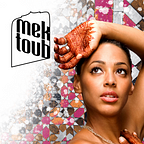Argan Oil: Morocco’s Liquid Gold
You’ve seen the iconic photos of goats in trees, right? Maybe you’ve even been lucky enough to see them in person while driving the roads in the near-coastal region of Morocco near Essaouira and Agadir.
They’re after the fruit of the argan tree, making for a winning proposition: the goats get the fruit. And we get the oil.
Argan oil is extracted from the milled nut inside the fruit of the argan tree.
The scrubby trees only grow in a specific region of Morocco and is so intertwined with the cultural history of Morocco that Morocco’s argan forest was declared a Biosphere Reserve by Unesco in 1998. And not that long ago the UN General Assembly declared May 10 “International Day of Argania” (argan tree) at the request of the government of Morocco.
Sometimes called “Moroccan Oil”, it may seem that argan oil exploded on the skincare scene just a couple of decades ago. There is evidence however that Amazigh women have used the oil in skincare preparations for a couple thousand years. The oil is effective skincare and haircare.
The process of extracting the oil is pretty arduous and time consuming. Attempts made to mechanize steps along the way have been unsuccessful. Most of the work is done by hand, and mostly by women. In years past, humans would wait for the goats to consume the fruit, and then harvest the nut the goats leave behind. Inside the nut is a kernel and it’s the kernel that makes the precious oil.
The oils are processed mostly the same whether for cosmetic or culinary use, the culinary oil is extracted from a toasted pip.
- The fleshy pulp of the fruit is dried and removed and used as animal feed
- The nut is then cracked and the kernel is removed
- The shell of the nut is used as fuel
- The kernel is removed and ground
- The oil is expressed from the meal
- The spent meal can be pressed into cakes is then dried and often used as animal feed
We find it super compelling that all along the way, all the pieces are used and there is very little waste.
So what makes the oil so good for your skin?
One reason the argan oil is so magical is the linoleic acid. These little molecules soothe skin, reduce inflammation and improve moisture retention. When argan oil is combined with other nutrient rich oils, it aids the absorption of the companion oils for deeper penetration due to oleic acid.
Just because we can, should we?
While argan oil makes for superior skincare, there are issues associated with the large-scale harvest when the plant is only endemic to ONE ecosystem in the entire world. Global demand for the ‘liquid gold’ is fraught with issues of sustainability, environmental stewardship and ethics. Large multinationals, like L’Oreal use a vast majority of the exports which doesn’t always benefit local coops, but instead benefits the middleman, like German-owned BASF.
Argan Collectives from Agadir to Essouaira
While visiting the argan collectives we had a chance to sample the oil in its raw state and the oil extracted from the toasted nut. We witnessed the labor-intense prepping and grinding of the oil. Plus, we got to cuddle some goats.
The toasted oil is often used as a dressing or a dip. And it is blended with ground almonds to create a delicious paste called Amlou, which is awesome with fresh bread, msemn or bagrir (Moroccan pancakes).
